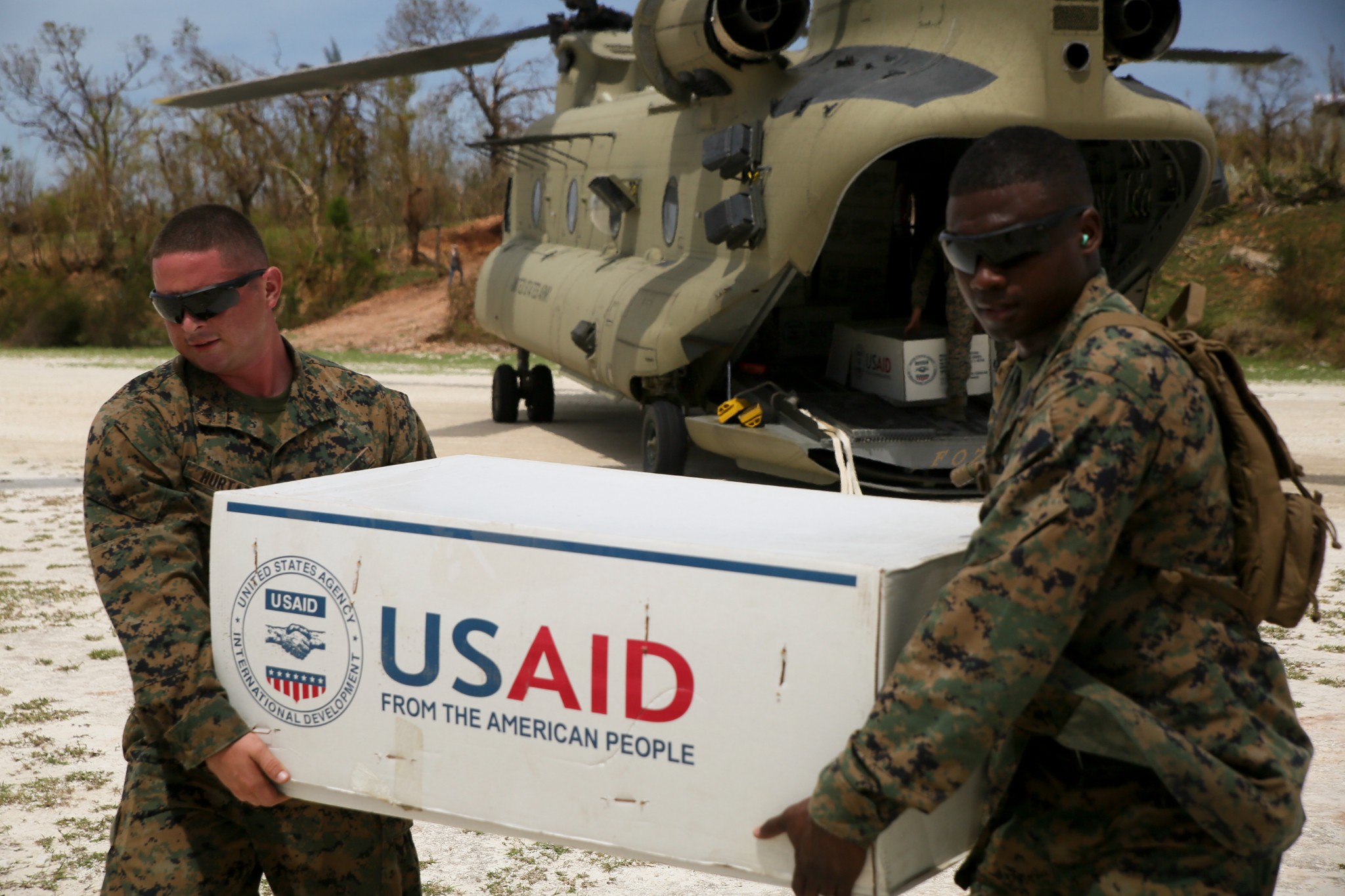 U.S. Marine Corpsman supporting USAID humanitarian and disaster relief assistance in the aftermath of Hurricane Matthew, courtesy of U.S. Marine Sgt. Ian Ferro.
U.S. Marine Corpsman supporting USAID humanitarian and disaster relief assistance in the aftermath of Hurricane Matthew, courtesy of U.S. Marine Sgt. Ian Ferro.
Towards a Framework for American Climate Security Action
The mutually beneficial relationship between development and security has been well established. Effective development requires security, and lasting security requires a baseline level of development. Yet even as climate security challenges hamper progress toward a more prosperous and secure world, only pieces of a U.S. policy architecture exist to address global climate security challenges. Effectively tackling the impacts of climate change on conflict around the world, and reaffirming U.S. leadership on climate, will require greater collaboration between U.S. development and defense.
Drought, storms, and flooding, among other events, can exacerbate food and water insecurity as well as fragile political systems, which produce conditions that are more conducive to conflict and social unrest. Development and defense programs intervene in this cycle at different timelines to ameliorate the escalation of violence. However, climate change is not only exacerbating the factors that can contribute to conflict, it can also affect both the ability and capacity to intervene.
As this cycle gains greater attention, a patchwork of policies has emerged to establish an integrated approach for addressing global security in American foreign policy that factors in the impacts of climate change. The Global Fragility Act (GFA) targets American assistance to areas with a confluence of factors contributing to instability, including climate change. Based on assessments from the Department of Defense (DoD), the United States Agency for International Development (USAID), and the Department of State (DoS), new 10-year plans to reduce violent conflict in over nine countries have been created. These plans aim to build more resilient institutions and social systems in target countries, which will improve climate security resilience. The GFA is the beginning of a new method of security assistance from the U.S. that recognizes that lasting stability requires addressing immediate security risks with military assistance and the root causes of vulnerability through development.
As climate considerations are factored into security assessments, USAID will play an increasingly greater role. Development has been described as part of the first line of defense for American interests around the globe. Targeted aid and development address the root causes of conflict, such as weakened economies and political institutions, as well as competition over scarce resources, which make countries more vulnerable to the impacts of climate change. In fact, USAID is already an important player in implementing climate solutions on the ground, as the U.S. government’s top coordinator for disasters. Yet, broadscale efforts to integrate a proactive development approach that includes climate change in conflict prevention initiatives has only recently taken off. In addition to the GFA, the President’s Emergency Plan for Adaptation and Resilience (PREPARE), co-led by DoS and USAID, aims to help vulnerable countries become more resilient to climate change through humanitarian, capital, and infrastructure assistance. PREPARE represents the level of coordination American foreign policy must establish to confront global climate security challenges.
The next step in moving this framework forward is to further merge development and defense planning. USAID and DoD have a long history of cooperation, and collaborative programming on climate security will ensure that operations are mutually beneficial. Already, proactive adaptation practices and conflict mitigation strategies that reduce the impact of climate change on conflict prone areas contribute indirectly to the DoD’s own stabilization efforts.
Operational integration between DoD and USAID will be critical for targeting areas where climate change intersects with ongoing regional security concerns. Joint coordination between regional offices over medium- and long-term projects could link development initiatives with military responses to track and limit the escalation of violence. Furthermore, programs such as the Defense Operational Resilience International Cooperation (DORIC), which coordinates efforts between DoD and foreign militaries on environmental and energy-related issues, could be complimented by USAID efforts to improve a country’s climate resilience and planning for conflict situations.
Meeting the demands of the 21st century security environment will require greater coordination between development and defense. To start, the 2018 Stabilization Assistance Review must be reworked to incorporate climate security. The GFA, PREPARE, and DORIC are the inklings of an American foreign policy framework that address growing climate security challenges. However, formalized and consistent USAID-DoD collaboration will be critical to linking long-term development strategies and swift action to ameliorate security risks that arise from climate change’s impacts.
Not only will uniting development and defense yield more effective action on climate security, but it also provides the framework for reasserting the U.S. as the global leader on climate in areas that are increasingly turning to China for development and climate assistance. As Retired Marine Corps Brigadier General Stephen Cheney put it, “American leadership can help reverse the dangers of a warming climate, and it can improve U.S. standing abroad by providing a viable alternative to China.”





